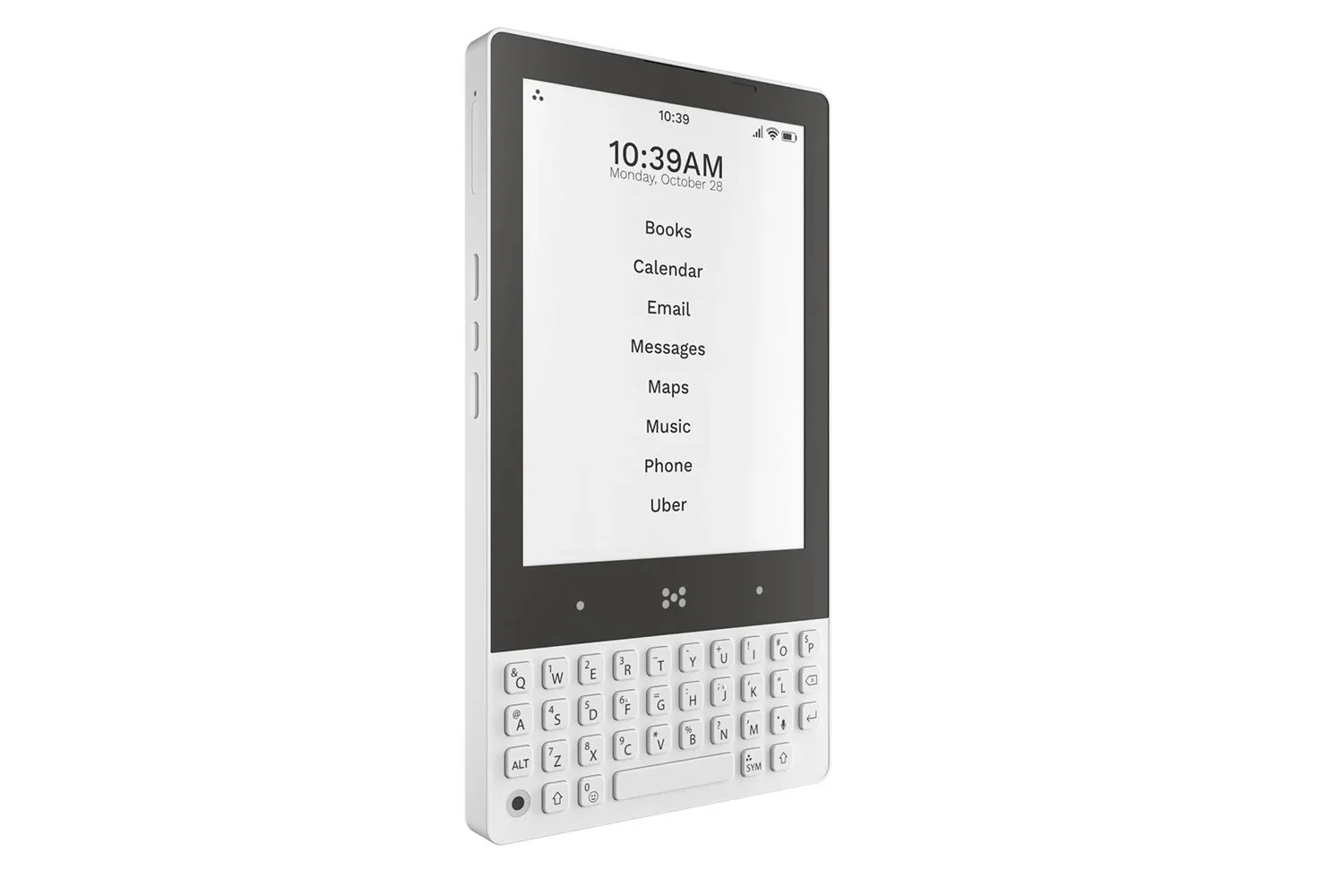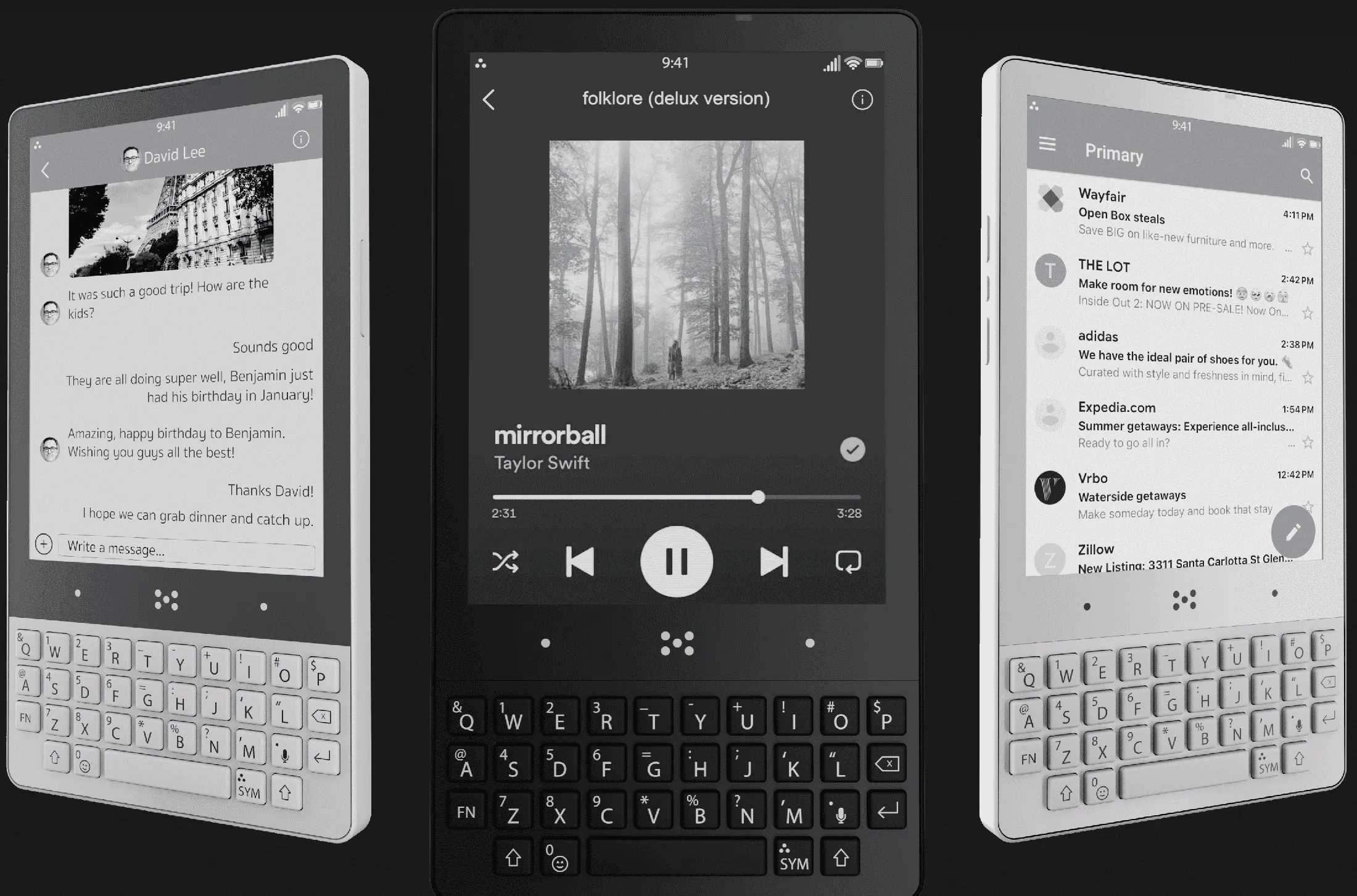After nearly a year of anticipation, the Minimal Phone has finally started shipping to backers, dispelling fears that it might be vaporware. This device, which runs Android 14 on an E Ink screen with cellular connectivity and a full QWERTY keyboard, aims to help users disconnect from the distractions of modern smartphones. While E Ink technology isn’t a perfect solution for curbing excessive screen time, its limitations may encourage users to put the device down more often, achieving the desired “distraction-free” experience.
A Unique Design for Text-Centric Use
The Minimal Phone features a 4.3-inch E Ink touchscreen with a black-and-white backlit display, making it ideal for text-heavy applications rather than graphics. The physical QWERTY keyboard, reminiscent of early 2000s smartphones, offers a nostalgic typing experience, though its 0.015mm key travel may be uncomfortable for those with longer nails.
Running on Android, the phone allows users to install apps from the Google Play Store, but the curated launcher limits distractions by focusing on essentials like email, maps, and even crypto wallets. Despite its minimalistic approach, the phone still supports modern features such as wireless payments and GPS, powered by a 3,000 mAh battery and a 16-MP camera.

The Minimal Phone’s biggest drawback lies in its reliance on E Ink, which is significantly slower than traditional OLED or LCD displays. The device runs on a MediaTek Helio G99 processor, commonly found in budget smartphones, meaning it lacks the speed and responsiveness users are accustomed to.
E Ink technology also suffers from slow refresh rates, making everyday tasks feel sluggish, especially when using apps designed for high-resolution, fast-refreshing screens. As seen with other E Ink devices like the Onyx Boox Go 6, users may need to adjust their expectations regarding speed and usability.
Marketing the Minimalist Lifestyle
The Minimal Phone is marketed as a tool for intentional living, helping users cut down on distractions and reduce stress. By limiting exposure to apps and news feeds that provoke unnecessary reactions, the phone aims to promote a more mindful digital experience.
However, the price tag of $400-$500 raises questions about its value, especially when alternative solutions exist. More affordable E Ink tablets, priced around $150, offer similar benefits without requiring users to switch smartphones entirely. Additionally, Android users can achieve a minimalist experience by installing simple, distraction-free launchers that streamline the home screen and app access.
While the Minimal Phone successfully delivers a unique, low-distraction smartphone experience, its high price and performance limitations make it a niche product. For those deeply committed to digital minimalism, it could be an effective tool, but more cost-effective alternatives exist, such as E Ink tablets or software-based minimalist solutions. Ultimately, whether the Minimal Phone is worth the investment depends on how much users value its unique combination of E Ink, Android functionality, and a physical keyboard in their quest for a more intentional digital life.




